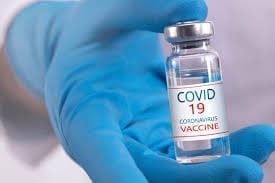Health
WHO’s Science in 5 on COVID-19: Vaccine dosage
Feb 19, 2021
Hello and welcome to Science in 5. I’m Vismita Gupta-Smith and this is WHO’s conversations in science. We are continuing our conversation about the COVID-19 vaccines and explaining the science and evidence behind it is WHO’s Chief Scientist,
Dr. Soumya Swaminathan.
Soumya, let’s talk about the vaccine dosage. What is WHO’s recommendation for how much time there should be between the two doses? And what if I can’t make it to my second dose? Or what if I miss my second dose altogether?
This is an important question. There are so many vaccines now under development and each of them is being given slightly different dosing schedules.
Most of the vaccines that are being developed need at least two doses, but there are some single-dose vaccine candidates as well. The interval between the doses depends on which vaccine you’re getting and the local authorities, the government, would have made a guideline and would inform you about when the second dose is due. Most of the two those vaccines currently are being given between three to four weeks between the first and the second dose.
But there is some data from some vaccines like the AstraZeneca vaccine, where delaying the second dose up to 12 weeks actually gives a better immune boost.
Now, in terms of missing the second dose or being delayed, it’s important to get the second dose if the vaccine is a two those schedule. It doesn’t matter if it’s early by a few days or late by a few days or even a couple of weeks. It’s important to go back and get that second dose because the first dose actually presents this new antigen to the immune system to prime it.
And the second dose is the one that really gives a boost to the immune system so that the antibody response, as well as T cell-mediated response, are very strong and they also develop a memory response, which then lasts for a long time, so that when the body sees this antigen again, this virus protein again, it knows that it needs to react quickly.
Soumya, can these two doses be from two different manufacturers?
Again, science is changing and evolving and the knowledge base is growing. There are now clinical trials ongoing in some countries that are looking at interchangeability, which means the first dose with one vaccine and the second dose with a different vaccine, maybe even a different platform vaccine. And immunologically, there are reasons why this would make sense.
However, at the present time, there isn’t enough data for us to recommend this type of interchangeable two-dose schedules. And so for the time being, the policy advice that WHO has put out, which is the SAGE guidelines on how to use vaccines, we’ve done it for the Pfizer vaccine, the Moderna vaccine, the AstraZeneca vaccine, and currently SAGE is reviewing the data from the other vaccines that are in the pipeline.
And so, we need to follow what’s in that policy advice and for the time being, it is recommended to have the second dose with the same vaccine as you had the first dose.
Soumya, these vaccines for COVID-19 have been developed with unprecedented speed. How have we ensured that there are no long-term effects of these vaccines?
So, vaccine development is a complex process, and it goes through different phases, starting from animal studies, through the phases of clinical trials in humans. And the last phase, Phase III, is normally done in several thousand individuals, tens of thousands of individuals. Half are given the placebo, half are given the vaccine. They are followed up over a period of time, usually, it’s a couple of years and then we assess the efficacy and the safety of the vaccine.
Now, because of the pandemic and the need to get these vaccines out quickly to save lives, the duration of follow up has been a couple of months rather than years, and emergency use authorisations have been given to these vaccines, which means that they are still under observation.
There are still systems in place in countries that are following up people that are recording and reporting any serious adverse events or other events.
WHO has a pharmacovigilance system that we work both with regulators and manufacturers, but also with countries that have set up safety monitoring systems so that we are constantly reviewing the adverse events that are being reported into the system, doing the analysis, making correlations on whether this is just a chance event or whether it’s actually related to the vaccine and then putting out the alerts or guidance based on that.
So far we know that, you know, over 150 million doses of vaccines have been administered around the world. And so far, the safety signals have been reassuring. There hasn’t been anything untoward that’s happened with any of the vaccines that have been really rolled out at a large scale.
However, we will continue to watch this very carefully and if there is any evidence of a relationship between a vaccine and a side effect, then that will be analysed and the guidance to countries will be updated from time to time.
Thank you, Soumya.
That was WHO’s Chief Scientist, Dr Soumya Swaminathan.
